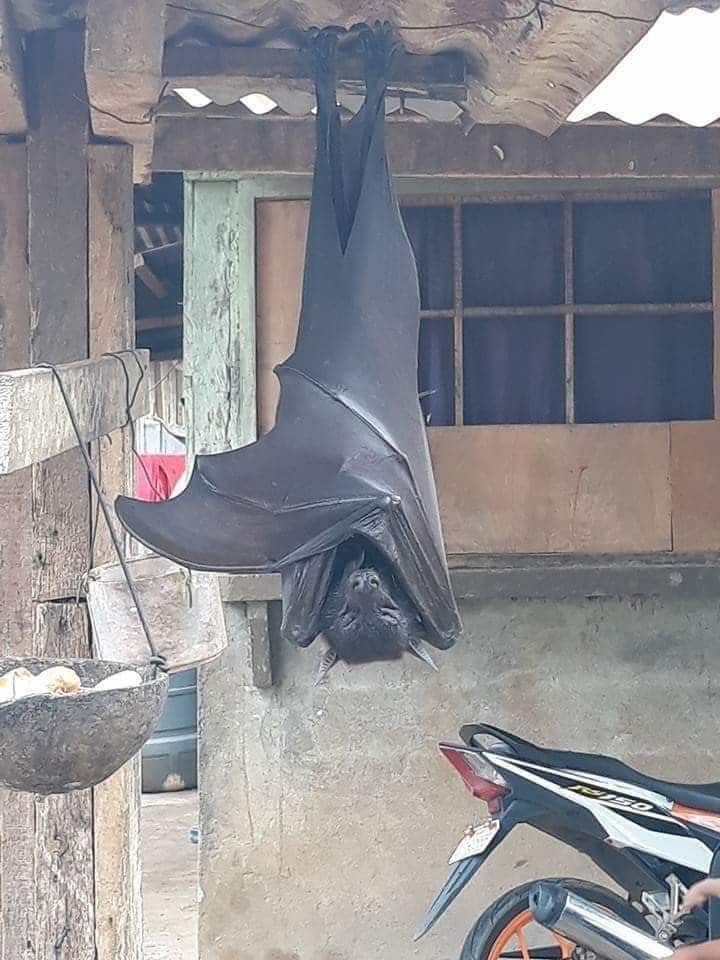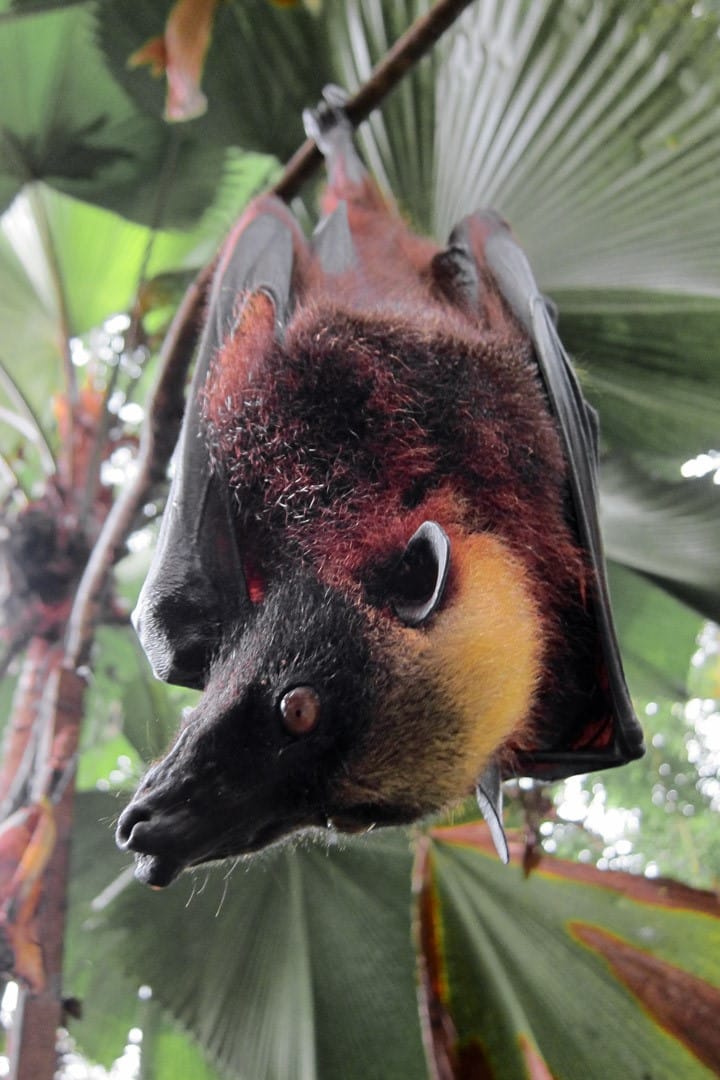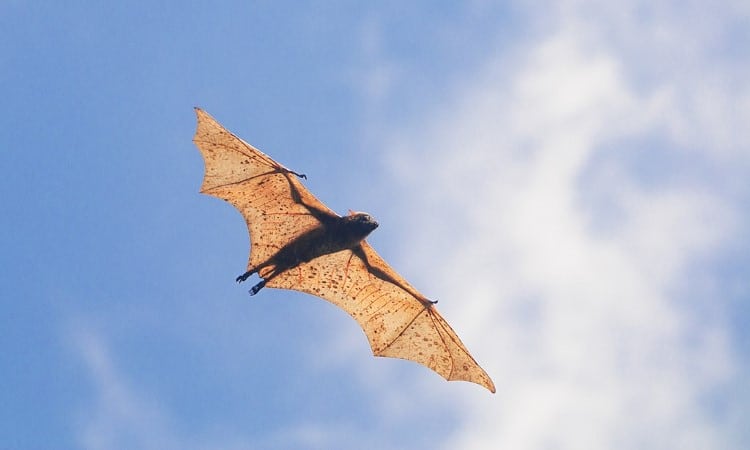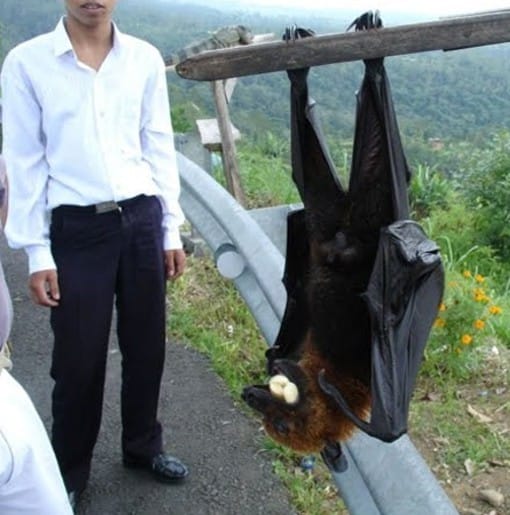Remember when I told y’all about the Philippines having human-sized bats?
That’s due toforced perspective, which is a common illusion used in photography.
So while the bat seems frighteningly large on Twitter, it’s not quite that big.

Photo:AlexJoestar622via Twitter
Still, anyone would probably jump if they turned the corner and saw this bat snoozing in their garage.
Luckily, giant golden-crowned flying foxes really have no interest in humans.
Their diet primarily consists of figs and leaves.

Photo:Gregg Yanvia Wikimedia Commons (CC BY-SA 3.0)
As with most bats, they go out foraging at night and then sleep during the day.
They can live anywhere from 10 to 30 years in the wild.
Little is known about their reproduction, except that females give birth to one pup at a time.

Photo:Luke Marcos Imbongvia Wikimedia Commons (CC BY-SA 4.0)
It’s also suspected that they only have one litter a year.
Given their size, it would likely take a large predator to take down this flying fox.
In fact, its main predators are large birds of prey like eagles.

Photo:jenesuisqunconvia Wikimedia Commons (CC BY-SA 4.0)
They are also hunted by reticulated pythons and, unfortunately, humans who use them for their bushmeat.
The giant golden-crowned flying fox was placed on theIUCN Red List in 2016due to its declining population numbers.
It’s estimated that in the late 1800s, there were mixed colonies of up to 100,000 bats.

Photo:Len Worthingtonvia Wikimedia Commons (CC BY-SA 2.0)
When they were first scientifically described in 1831, these bats were actually broken into three subspecies.
One of these subspecies,A.
jubatus lucifer, is already extinct.

Photo:Len Worthingtonvia Wikimedia Commons (CC BY-SA 2.0)
So it’s more important than ever that we take care of the remaining subspecies.